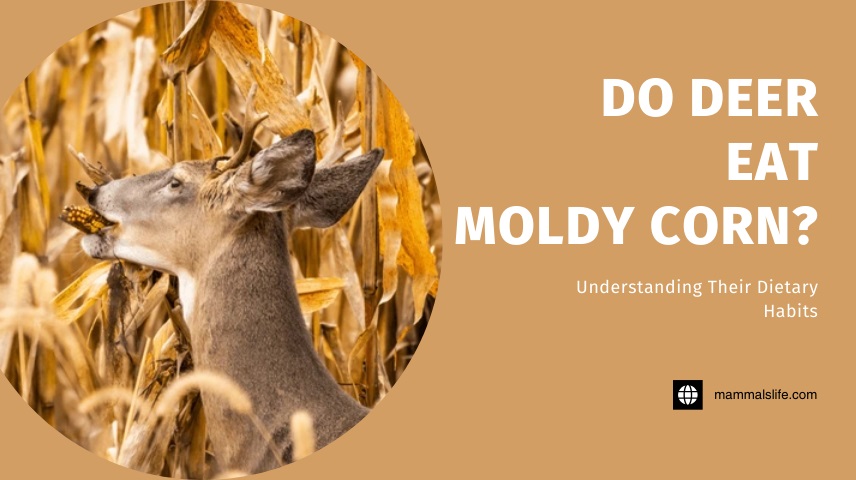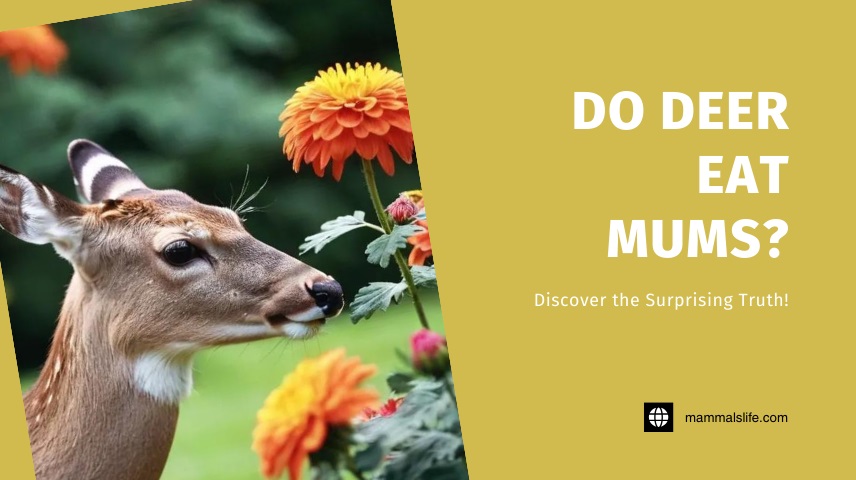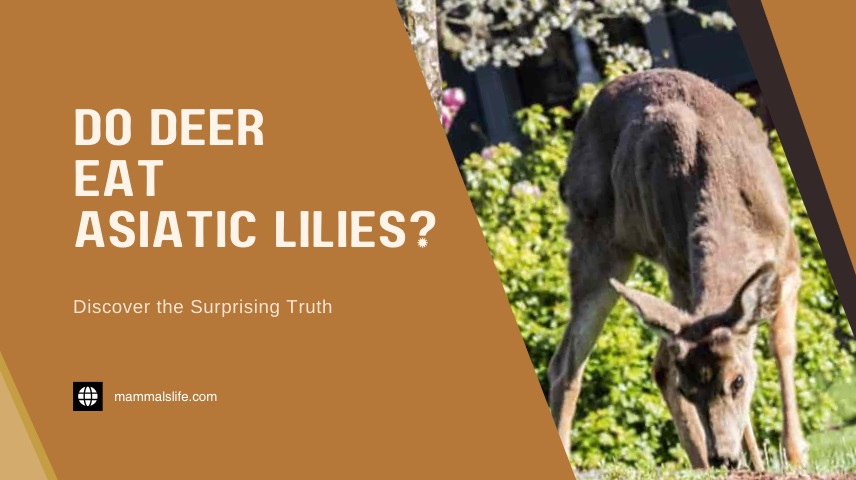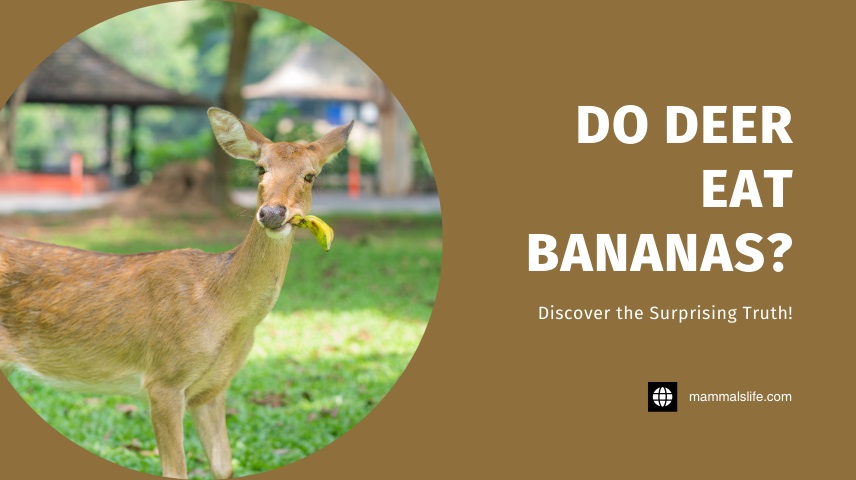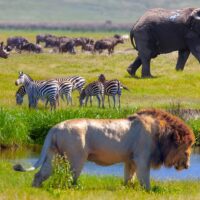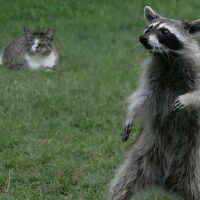Last Updated on February 22, 2025 by Mammals Life
Deer typically avoid eating moldy corn. Mold can be harmful and cause health issues in deer.
Deer are often attracted to corn as a food source, especially in colder months when natural forage is scarce. Moldy corn, however, poses a significant risk. Molds produce mycotoxins that can lead to severe health problems in deer, including digestive issues and even death.
Ensuring that the corn is fresh and mold-free is crucial for their safety. Hunters and wildlife enthusiasts should regularly check their feed to prevent mold growth. Proper storage of corn can help maintain its quality and avoid contamination. Providing safe, clean food sources is essential for supporting healthy deer populations.
Deer Dietary Preferences
Deer have unique dietary preferences. Their eating habits affect their health and habitat. Understanding what deer eat helps us protect these graceful animals.
Natural Food Sources
Deer eat a variety of natural food sources. They enjoy leaves, twigs, and fruits. They also eat nuts, acorns, and mushrooms.
Here is a table showing common natural foods deer eat:
| Food Type | Examples |
|---|---|
| Fruits | Apples, Berries |
| Leaves | Maple, Oak |
| Nuts | Acorns, Chestnuts |
| Mushrooms | Various Wild Types |
Seasonal Variations
Deer diet changes with the seasons. In spring and summer, they eat green plants and fruits. In fall, they consume nuts and acorns to build fat for winter.
Winter is challenging for deer. They eat bark, twigs, and evergreen leaves. They also dig through snow for buried food.
Seasonal diet helps deer survive and stay healthy. Ensuring deer have access to natural food sources year-round is crucial.
Corn In Deer Diet
Deer often seek out corn as a part of their diet. Corn provides essential nutrients and energy. It is a favorite among deer, especially during colder months. Understanding the role of corn in a deer’s diet can help in wildlife management and feeding practices.
Nutritional Benefits
Corn is high in carbohydrates, which provide energy. This is crucial for deer, especially during winter. Carbohydrates help deer maintain their body heat.
Additionally, corn contains essential vitamins and minerals. These nutrients support overall health and growth. The fiber in corn aids in digestion.
Popularity Among Deer
Deer love the taste of corn. It is sweet and easily digestible. Corn is often used in deer feeders and baiting stations.
During the fall and winter, corn becomes even more popular. It provides the extra energy deer need to survive the cold. Hunters and wildlife enthusiasts often use corn to attract deer.
| Component | Benefits |
|---|---|
| Carbohydrates | Provide energy and maintain body heat |
| Vitamins & Minerals | Support overall health and growth |
| Fiber | Aids in digestion |
Understanding the nutritional benefits and popularity of corn can help in feeding deer. It ensures they get the nutrients they need and stay healthy.
Risks Of Moldy Corn
Deer love corn, but moldy corn can be dangerous. Moldy corn poses serious health risks to deer. It can lead to severe illnesses and even death. Understanding these risks is crucial for those who feed deer.
Health Hazards
Moldy corn contains toxins called mycotoxins. These toxins are harmful to deer. They can cause severe health issues like liver damage and immune system problems. Deer eating moldy corn may experience weight loss and poor growth.
Here are some health hazards associated with moldy corn:
- Liver Damage: Mycotoxins can severely damage the liver.
- Immune System Problems: Deer become more prone to diseases.
- Poor Growth: Affected deer may not grow properly.
- Death: In extreme cases, it can lead to death.
Common Mold Types
There are many types of mold that can grow on corn. Each type has different effects. Here are some common mold types found on corn:
| Mold Type | Effects |
|---|---|
| Aspergillus | Produces aflatoxins, highly toxic and carcinogenic. |
| Fusarium | Produces fumonisins, harmful to liver and kidneys. |
| Penicillium | Produces mycotoxins, causes digestive issues. |
Feeding deer moldy corn is risky. Always check corn for mold before feeding. Ensure deer receive safe and healthy food.
Deer Feeding Behavior
Deer are known for their unique feeding behavior. They adapt based on seasonal changes and food availability. Understanding their feeding habits is crucial for wildlife enthusiasts and farmers.
Foraging Patterns
Deer usually forage during dawn and dusk. This is when they feel safest. They tend to avoid open areas during daylight to evade predators.
During the night, deer move to fields and meadows. They seek food without the threat of predators. Their foraging patterns change with the seasons.
| Season | Foraging Behavior |
|---|---|
| Spring | Seek fresh grass and budding plants |
| Summer | Graze on leafy greens and young shoots |
| Fall | Forage for acorns and fallen fruits |
| Winter | Look for bark and woody plants |
Food Selection Criteria
Deer are selective eaters. They prefer fresh and nutritious food. Moldy corn often doesn’t meet their standards.
- Nutritional Value: Deer seek food high in energy and nutrients.
- Taste and Smell: They rely on their senses to detect fresh food.
- Safety: Deer avoid food that could be harmful or toxic.
Understanding these criteria helps in managing deer populations. It also aids in preventing crop damage on farms.
Safe Feeding Practices
Feeding deer can be a rewarding experience. But it’s important to ensure their food is safe. Feeding deer moldy corn can be harmful. Let’s explore some safe feeding practices to keep deer healthy.
Preventing Mold Growth
Store corn in a dry, cool place. Moisture can cause mold growth. Check the corn for mold before feeding it to deer.
- Use airtight containers.
- Inspect for any signs of mold.
- Discard moldy corn immediately.
Mold can be dangerous for deer. Always keep the corn dry and clean.
Alternative Food Options
If corn is not available, consider other food options. Deer enjoy a variety of foods.
| Food | Benefits |
|---|---|
| Oats | Rich in nutrients and easy to digest. |
| Apples | High in vitamins and minerals. |
| Acorns | Natural food source in the wild. |
Offering diverse food options keeps deer healthy and happy. Avoid feeding deer spoiled or moldy food. Always ensure food is fresh and clean.
Frequently Asked Questions
Do Deer Eat Moldy Corn?
Deer may eat moldy corn, but it can be harmful to their health.
Is Moldy Corn Safe For Deer?
No, moldy corn is not safe for deer and can cause health issues.
Can Mold In Corn Harm Deer?
Yes, mold in corn can produce toxins that may harm deer, leading to illness or death.
Why Should Deer Avoid Moldy Corn?
Deer should avoid moldy corn because it can contain harmful toxins that affect their health.
What Happens If Deer Eat Moldy Corn?
Eating moldy corn can cause deer to suffer from digestive issues and other health problems.
How To Prevent Deer From Eating Moldy Corn?
Store corn properly in a dry, cool place to prevent mold growth and keep it safe for deer.
Conclusion
Feeding deer moldy corn can harm their health. It’s best to provide fresh, clean food to ensure their safety. Moldy corn can cause digestive issues and other health problems. Always check the quality of corn before feeding wildlife. Prioritize their well-being by offering nutritious and safe food options.

